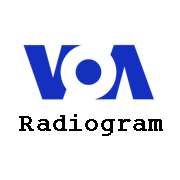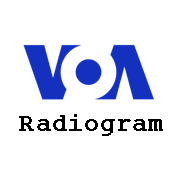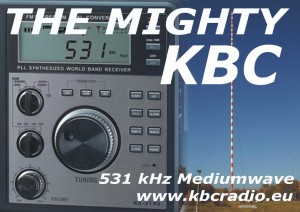 (Source: VOA Radiogram)
(Source: VOA Radiogram)
During the past weekend, EasyPal digital images were received successfully throughout Europe and North America. You can see a gallery of some of the received images here:
voaradiogram.net/post/51385444401/voa-radiogram-easypal-images-received-100-or-0
Reviewing the advantages of EasyPal versus MFSK32:
EasyPal:
1) When received successfully, the picture is perfect.
2) Takes less time to transmit than MFSK32 and most SSTV images of the same size.
3) No problems with slant if soundcards are not calibrated.
MFSK32:
1) If the signal drops below a certain level, or if interference exceeds a certain level, no EasyPal image will be received at all. Under similar reception conditions, MFSK32, which uses an analog frequency shift keying system for images, will allow the an image to be seen, even if the quality is not perfect.
2) MFSK32 images allows images of different heights and widths, including small images which can be transmitted quickly. The gray tone MFSK32 image option allows even faster transmission.
3) MFSK32 images can be decoded by more than one software program under more than one operating system. There is only one EasyPal program, and it works only under the Windows operating system.
I welcome your comments and suggestions about the transmission of images via shortwave broadcast. Weighing all of the above factors, I am inclined to adopt MFSK32 as the primary image mode for VOA Radiogram. However, the EasyPal images are so impressive that I will continue to include some in future programs.
On VOA Radiogram for the weekend of 1 and 2 June 2013, we will continue to compare MFSK32 and EasyPal images. Here is the lineup for the program:
3:44 MFSK16: Program preview
3:17 MFSK32: VOA News story about Olympics wrestling
3:16 MFSK32: VOA News story about 2013 hurricane season
1:10 MFSK32: File image of Atlantic hurricane
2:53 MFSK32: VOA News story about colliding galaxies
1:04 MFSK32: Image of the colliding galaxies
1:21 MFSK32: Introduction to MFSK64 and EasyPal
1:30 MFSK64: Same VOA News story about colliding galaxies
:39 EasyPal text: Same VOA News story about galaxies
2:38 EasyPal image: Colliding galaxies
2:38 EasyPal image: Soyuz capsule being moved to launch site
1:09 MFSK16 closing announcements
:29 Surprise mode of the weekTo decode EasyPal text and images, download the 4-May-2013 version of the program from vk4aes.com.
To decode the MFSK modes, use Fldigi from w1hkj.com or another digital decoding program.
VOA Radiogram transmission schedule
(all days and times UTC)Sat 1600-1630 17860 kHz
Sun 0230-0300 5745 kHz
Sun 1300-1330 6095 kHz
Sun 1930-2000 15670 kHzAll via the Edward R. Murrow transmitting station in North Carolina.
Please send reception reports to [email protected]
And visit voaradiogram.net (where any schedule or frequency changes will be posted)
Twitter: @VOARadiogram
Kim
Kim Andrew Elliott
Producer and Presenter
VOA Radiogram





